SEO
8 Machine Learning Examples From Brands To Inspire Digital Marketers

Machine learning is all the rage but what does it actually look like in practice, as part of a digital marketing strategy?
You’ve encountered a machine learning strategy if you’ve used a website that recommends products based on previous purchases.
Machine learning is a facet of artificial intelligence (AI) that uses algorithms to complete specific tasks, such as product recommendations.
It can achieve a multitude of functions for digital marketers, including:
Machine learning has been in digital marketing for years.
In fact, you are using machine learning whenever you use search engines.
While still a new strategy for most, many businesses have begun implementing this technology into their marketing campaigns.
Below are eight examples of machine learning in digital marketing.
1. Chase
In 2019, the banking giant, Chase Bank, partnered with Persado to help create marketing copy for its campaigns.
They challenged the AI company to generate copy that yields more clicks — which they did.
Examples of the machine learning generated copy are:
Human copy: “Go paperless and earn $5 Cash Back.”
Machine-generated copy: “Limited Time Offer: We’ll reward you with $5 Cash Back when you go paperless.”
Results: AI copy generated nearly double the clicks.
Human copy: “Access cash from the equity in your home” with a “Take a look” button.
Machine-generated copy: “It’s true – You can unlock cash from the equity in your home” with a quick “Click To Apply.”
Results: AI copy attracted 47 applicants a week, while human copy attracted 25 applicants a week.
Human copy: “Hurry, It Ends December 31 Earn 5% Cash Back At Department Stores, Wholesale Clubs.”
Machine-generated copy: “Regarding Your Card: 5% Cash Back Is Waiting For You”
Results: AI copy generated nearly five times the unique clicks.
While the machine-generated copy may have performed better with customers, it’s important to remember that it worked with human copywriters feeding it ideas.
Together, human copywriters and machine learning can create and optimize copy that resonates.
2. Starbucks
With stores worldwide, Starbucks obtains a lot of data.
Starbucks can access purchase insights and turn this information into marketing collateral with the Starbucks loyalty card and mobile app. This strategy is called predictive analysis.
For example, machine learning collects the drinks each customer buys, where they buy them, and when they buy them, and matches this with outside data such as weather and promotions to serve ultra-personalized ads to customers.
One instance includes identifying the customer through Starbucks’ point-of-sale system and providing the barista with their preferred order.
The app can also suggest new products based on previous purchases (which can change according to weather conditions or holidays).
Machine learning can take the guesswork out of product recommendations.
Retail giants like Starbucks have millions of customers, yet they can make each feel like they get personalized recommendations because they can sift through data quickly and efficiently.
3. eBay
eBay has millions of email subscribers. Each email needed engaging subject lines that would cause the customer to click.
However, delivering over 100 million eye-catching subject lines proved overwhelming to human writers.
Enter machine learning.
eBay partnered with Phrasee to help generate engaging subject lines that didn’t trigger spam filters. Additionally, the machine-generated copy aligned with eBay’s brand voice.
Their results show success:
- 15.8% increase in open rates.
- 31.2% increase in average clicks.
- Over 700,000 incremental opens per campaign.
- Over 56,000 incremental clicks per campaign.
Machine learning can take the most daunting tasks and complete them within minutes at scale.
As a result, businesses can focus more on big-picture campaigns than microtasks.
4. Doordash
Doordash operates thousands of marketing campaigns across its marketing channels.
Their team manually updates bids based on the ads’ performance.
However, the team found that this task was time-consuming and overwhelming.
So Doordash turned to machine learning to optimize its marketing spend.
It built a marketing automation platform based on attribution data.
This data tells the company which channel the customer converted on and with what campaign.
However, it can be hard to promptly collect that type of data with thousands of campaigns going on at once.
Machine learning helps tackle this task by collecting that data and creating spending recommendations so they can optimize their budget quickly and efficiently.
5. Autodesk
Autodesk saw the need for more sophisticated chatbots.
Consumers are often frustrated by the limitations of chatbots and therefore prefer to speak with a human.
However, chatbots can help efficiently guide customers to the content, salesperson, or service page they need.
So Autodesk turned to machine learning and AI.
Autodesk’s chatbot uses machine learning to create dialogue based on search engine keywords.
Then, the chatbot can connect to the customer on the other end, allowing for faster conversion rates.
Since implementing their chatbot, Autodesk had three times the chat engagement and a 109% increase in time spent on the page.
6. Baidu
In 2017, Baidu, the Chinese search engine, built a system called Deep Voice that uses machine learning to convert text to speech. This system can learn 2,500 voices with a half-hour of data each.
Baidu explains that Deep Voice can lead to more immersive experiences in video games and audiobooks.
Baidu’s goal with Deep Voice is to teach machines to speak more human-like by imitating thousands of human voices.
Soon, the search engine hopes the system can master 10,000 or more voices with different accents.
When perfected, Deep Voice could improve things we use every day, like:
- Siri.
- Alexa.
- Google Assistant.
- Real-time translation.
- Biometric security.
It can even help people who have lost their voice communicate again.
While there haven’t been any recent updates, Baidu remains hopeful that Deep Voice will revolutionize our tech.
7. Tailor Brands
Tailor Brands uses machine learning to help its users create logos.
The machine, “This or That,” helps Tailor Brands understand a user’s taste using decision-making algorithms.
By choosing examples of what they like, users tell the logo generator their preferences for styles, fonts, and other design aspects.
Tailor Brands uses linear algebra.
Each user’s decision is fed into an equation that helps the machine learn the user’s preferences.
The next time someone generates a logo, Tailor Brands can show styles similar to what they’ve used before.
8. Yelp
Yelp receives millions of photos every day worldwide.
The company realized it needed a sophisticated way to match photos to specific businesses.
So they developed a photo understanding system to create semantic data about individual photographs.
This system allows Yelp to sort photos into categories relevant to the user’s search.
First, Yelp created labels for the photos they received from users, such as “drinks” or “menu.”
Next, the company collected data from photo captions, photo attributes, and crowdsourcing.
Then, it implemented machine learning to recognize the photo labels, from which the system could put the photos into categories.
This photo classification system helps create a better user experience on Yelp.
For instance, it can help diversify cover photos and create tabs that let users jump to the exact information they are looking for.
Digital marketers are only scratching the surface of what machine learning can do for them.
Humans and machines can work together to create more meaningful customer experiences and more optimized campaigns in less time. It’s a win-win-win.
More resources:
Featured Image: /Shutterstock
!function(f,b,e,v,n,t,s)
{if(f.fbq)return;n=f.fbq=function(){n.callMethod?
n.callMethod.apply(n,arguments):n.queue.push(arguments)};
if(!f._fbq)f._fbq=n;n.push=n;n.loaded=!0;n.version=’2.0′;
n.queue=[];t=b.createElement(e);t.async=!0;
t.src=v;s=b.getElementsByTagName(e)[0];
s.parentNode.insertBefore(t,s)}(window,document,’script’,
‘https://connect.facebook.net/en_US/fbevents.js’);
if( typeof sopp !== “undefined” && sopp === ‘yes’ ){
fbq(‘dataProcessingOptions’, [‘LDU’], 1, 1000);
}else{
fbq(‘dataProcessingOptions’, []);
}
fbq(‘init’, ‘1321385257908563’);
fbq(‘track’, ‘PageView’);
fbq(‘trackSingle’, ‘1321385257908563’, ‘ViewContent’, {
content_name: ‘machine-learning-examples’,
content_category: ‘seo’
});
SEO
Measuring Content Impact Across The Customer Journey
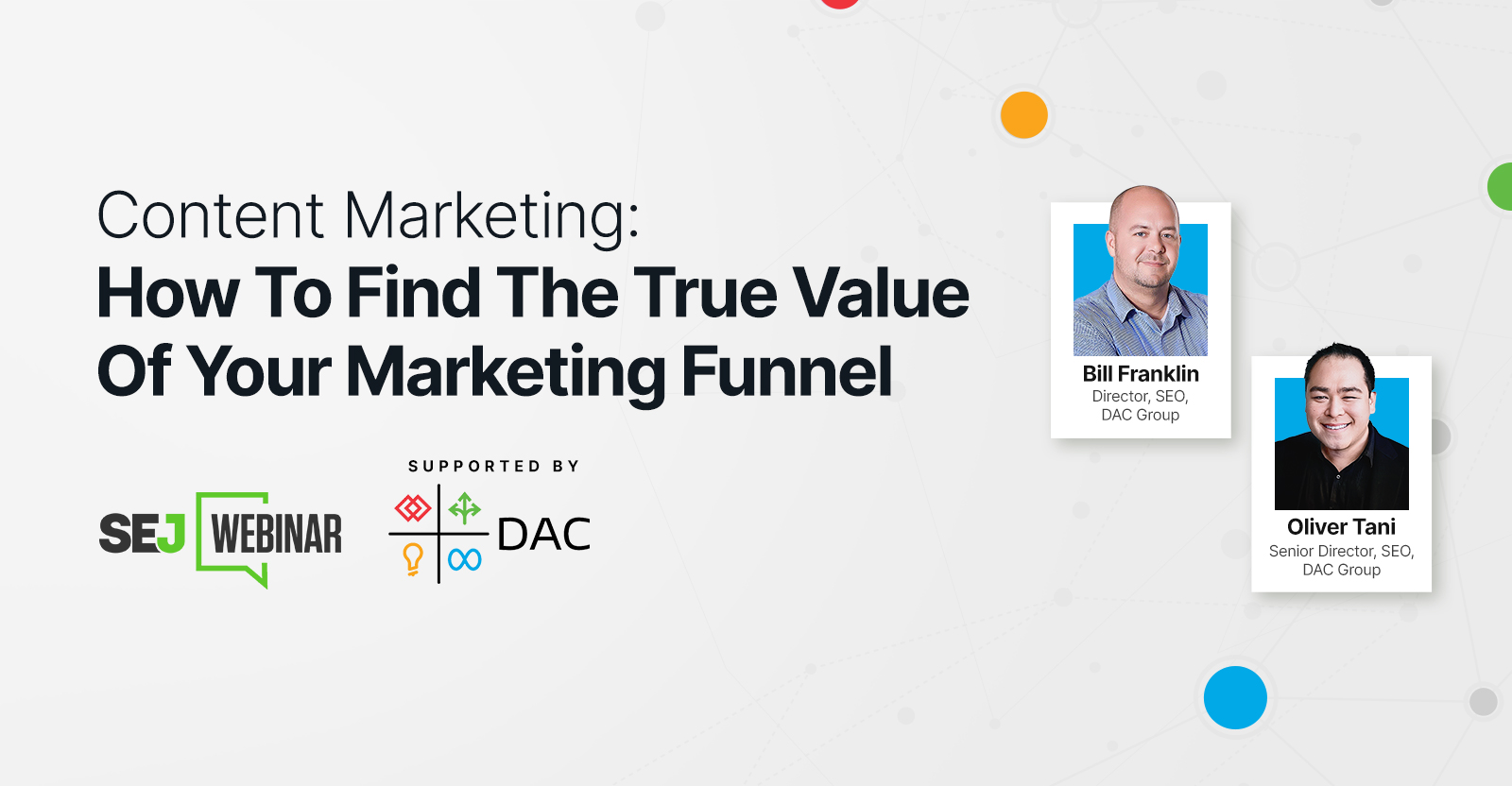
Understanding the impact of your content at every touchpoint of the customer journey is essential – but that’s easier said than done. From attracting potential leads to nurturing them into loyal customers, there are many touchpoints to look into.
So how do you identify and take advantage of these opportunities for growth?
Watch this on-demand webinar and learn a comprehensive approach for measuring the value of your content initiatives, so you can optimize resource allocation for maximum impact.
You’ll learn:
- Fresh methods for measuring your content’s impact.
- Fascinating insights using first-touch attribution, and how it differs from the usual last-touch perspective.
- Ways to persuade decision-makers to invest in more content by showcasing its value convincingly.
With Bill Franklin and Oliver Tani of DAC Group, we unravel the nuances of attribution modeling, emphasizing the significance of layering first-touch and last-touch attribution within your measurement strategy.
Check out these insights to help you craft compelling content tailored to each stage, using an approach rooted in first-hand experience to ensure your content resonates.
Whether you’re a seasoned marketer or new to content measurement, this webinar promises valuable insights and actionable tactics to elevate your SEO game and optimize your content initiatives for success.
View the slides below or check out the full webinar for all the details.
SEO
How to Find and Use Competitor Keywords

Competitor keywords are the keywords your rivals rank for in Google’s search results. They may rank organically or pay for Google Ads to rank in the paid results.
Knowing your competitors’ keywords is the easiest form of keyword research. If your competitors rank for or target particular keywords, it might be worth it for you to target them, too.
There is no way to see your competitors’ keywords without a tool like Ahrefs, which has a database of keywords and the sites that rank for them. As far as we know, Ahrefs has the biggest database of these keywords.
How to find all the keywords your competitor ranks for
- Go to Ahrefs’ Site Explorer
- Enter your competitor’s domain
- Go to the Organic keywords report
The report is sorted by traffic to show you the keywords sending your competitor the most visits. For example, Mailchimp gets most of its organic traffic from the keyword “mailchimp.”


Since you’re unlikely to rank for your competitor’s brand, you might want to exclude branded keywords from the report. You can do this by adding a Keyword > Doesn’t contain filter. In this example, we’ll filter out keywords containing “mailchimp” or any potential misspellings:
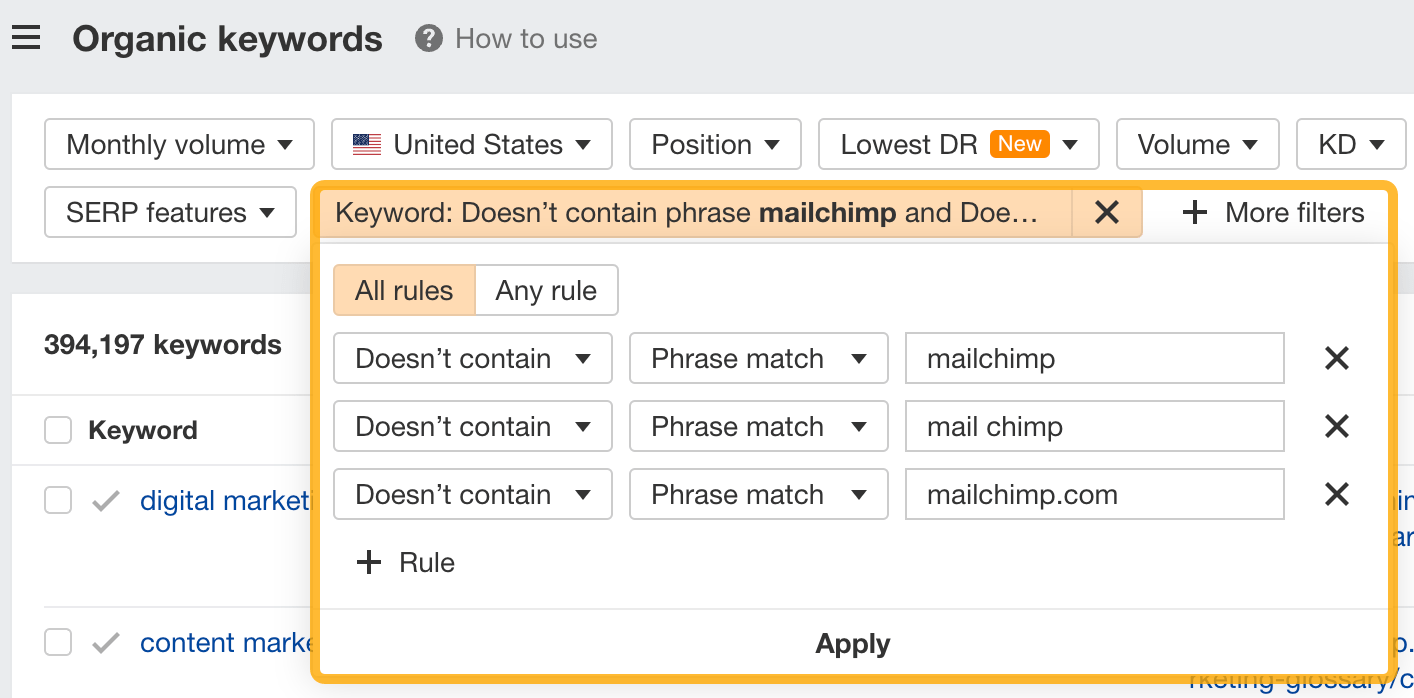

If you’re a new brand competing with one that’s established, you might also want to look for popular low-difficulty keywords. You can do this by setting the Volume filter to a minimum of 500 and the KD filter to a maximum of 10.


How to find keywords your competitor ranks for, but you don’t
- Go to Competitive Analysis
- Enter your domain in the This target doesn’t rank for section
- Enter your competitor’s domain in the But these competitors do section


Hit “Show keyword opportunities,” and you’ll see all the keywords your competitor ranks for, but you don’t.


You can also add a Volume and KD filter to find popular, low-difficulty keywords in this report.


How to find keywords multiple competitors rank for, but you don’t
- Go to Competitive Analysis
- Enter your domain in the This target doesn’t rank for section
- Enter the domains of multiple competitors in the But these competitors do section
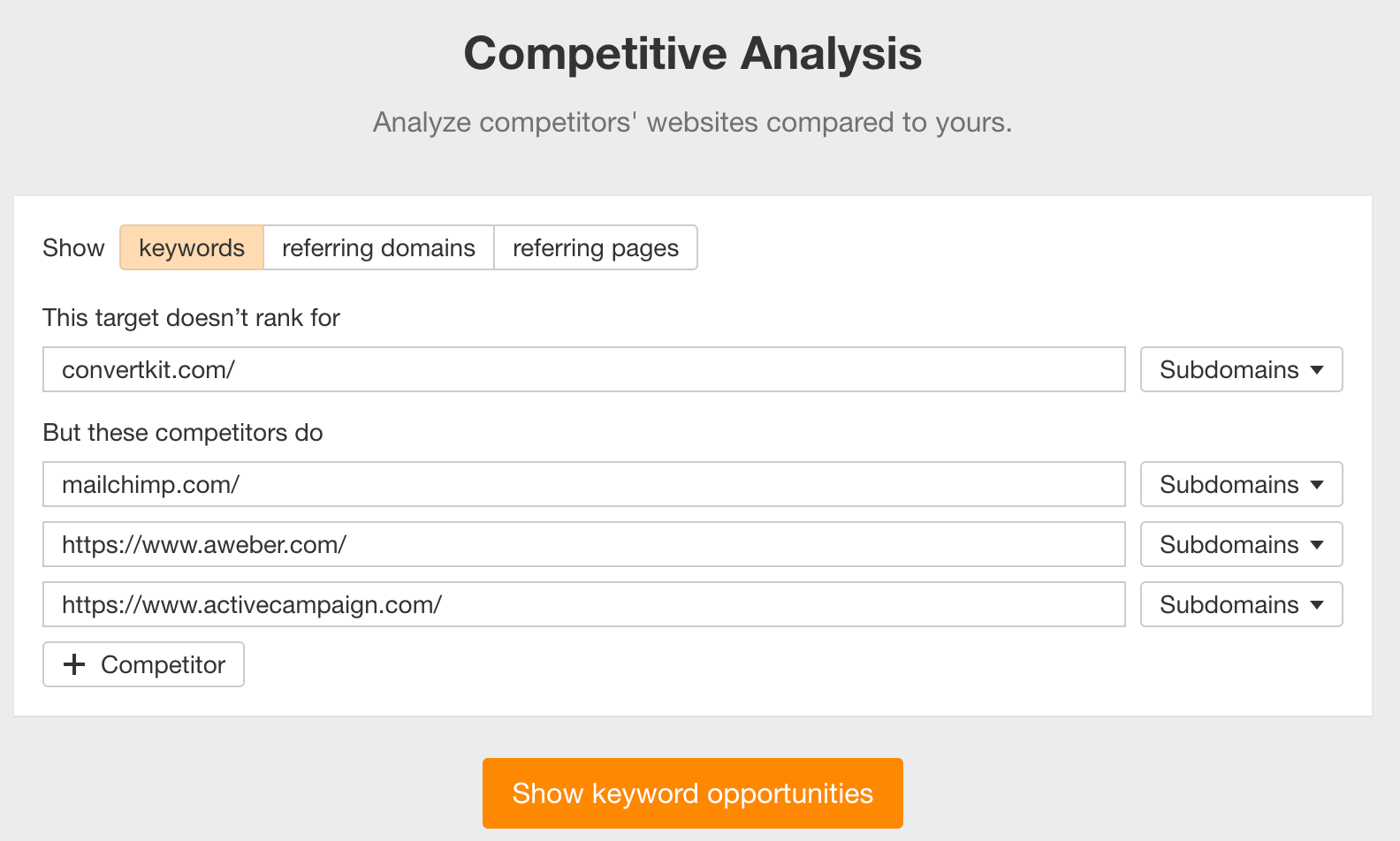

You’ll see all the keywords that at least one of these competitors ranks for, but you don’t.


You can also narrow the list down to keywords that all competitors rank for. Click on the Competitors’ positions filter and choose All 3 competitors:


- Go to Ahrefs’ Site Explorer
- Enter your competitor’s domain
- Go to the Paid keywords report
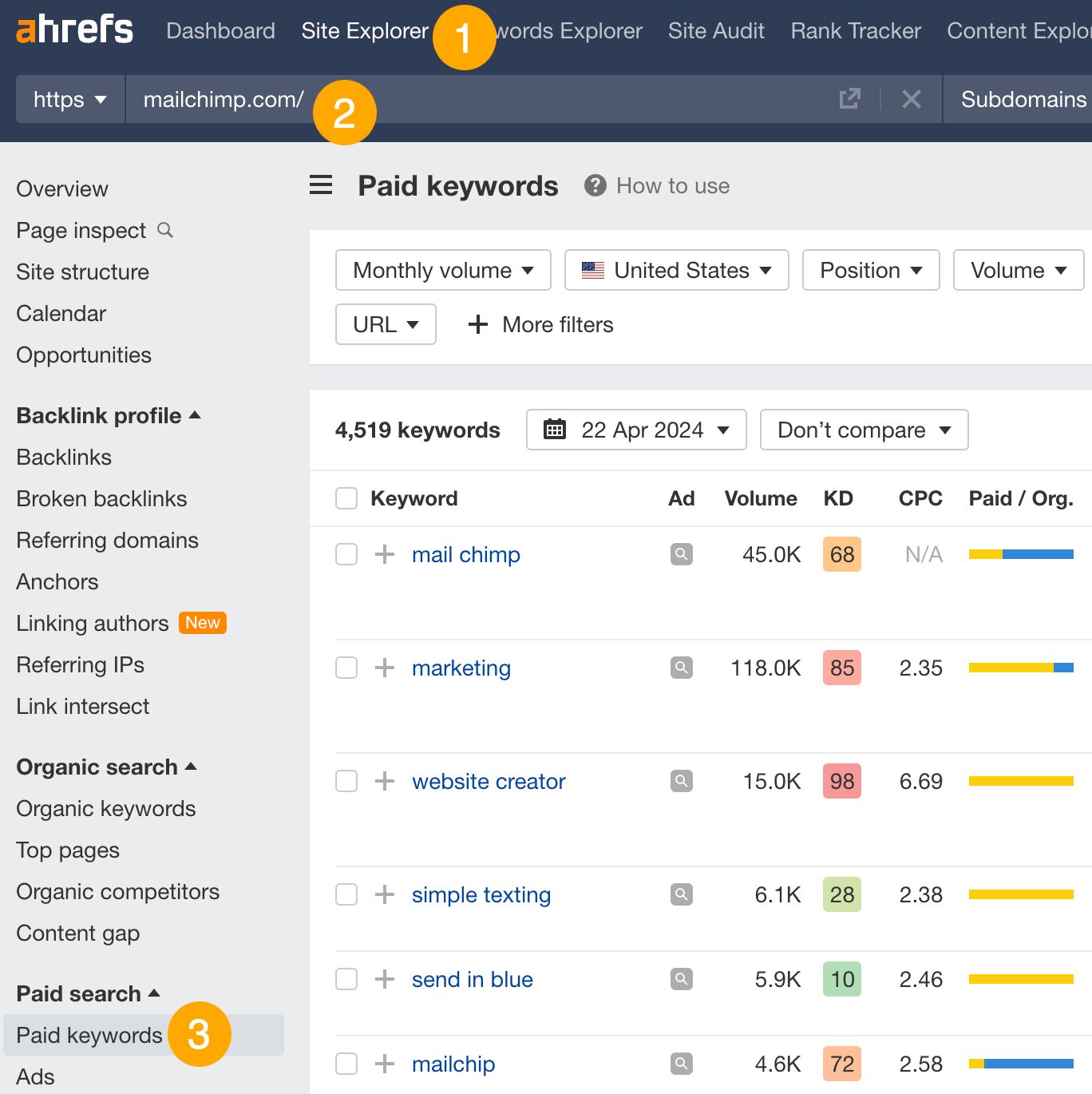

This report shows you the keywords your competitors are targeting via Google Ads.
Since your competitor is paying for traffic from these keywords, it may indicate that they’re profitable for them—and could be for you, too.
You know what keywords your competitors are ranking for or bidding on. But what do you do with them? There are basically three options.
1. Create pages to target these keywords
You can only rank for keywords if you have content about them. So, the most straightforward thing you can do for competitors’ keywords you want to rank for is to create pages to target them.
However, before you do this, it’s worth clustering your competitor’s keywords by Parent Topic. This will group keywords that mean the same or similar things so you can target them all with one page.
Here’s how to do that:
- Export your competitor’s keywords, either from the Organic Keywords or Content Gap report
- Paste them into Keywords Explorer
- Click the “Clusters by Parent Topic” tab


For example, MailChimp ranks for keywords like “what is digital marketing” and “digital marketing definition.” These and many others get clustered under the Parent Topic of “digital marketing” because people searching for them are all looking for the same thing: a definition of digital marketing. You only need to create one page to potentially rank for all these keywords.
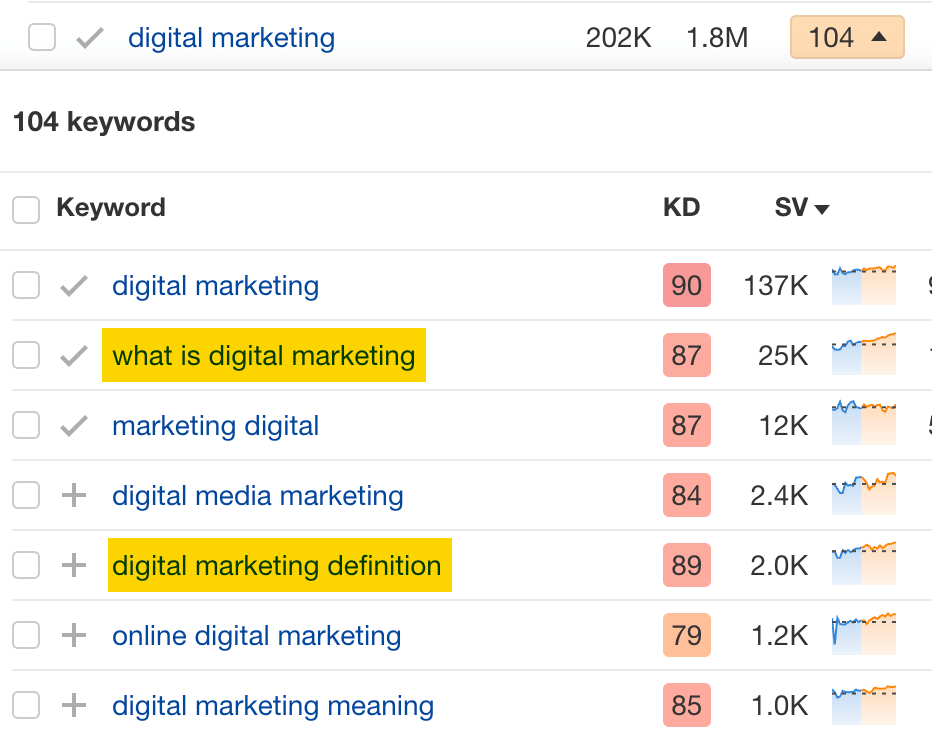

2. Optimize existing content by filling subtopics
You don’t always need to create new content to rank for competitors’ keywords. Sometimes, you can optimize the content you already have to rank for them.
How do you know which keywords you can do this for? Try this:
- Export your competitor’s keywords
- Paste them into Keywords Explorer
- Click the “Clusters by Parent Topic” tab
- Look for Parent Topics you already have content about
For example, if we analyze our competitor, we can see that seven keywords they rank for fall under the Parent Topic of “press release template.”


If we search our site, we see that we already have a page about this topic.


If we click the caret and check the keywords in the cluster, we see keywords like “press release example” and “press release format.”
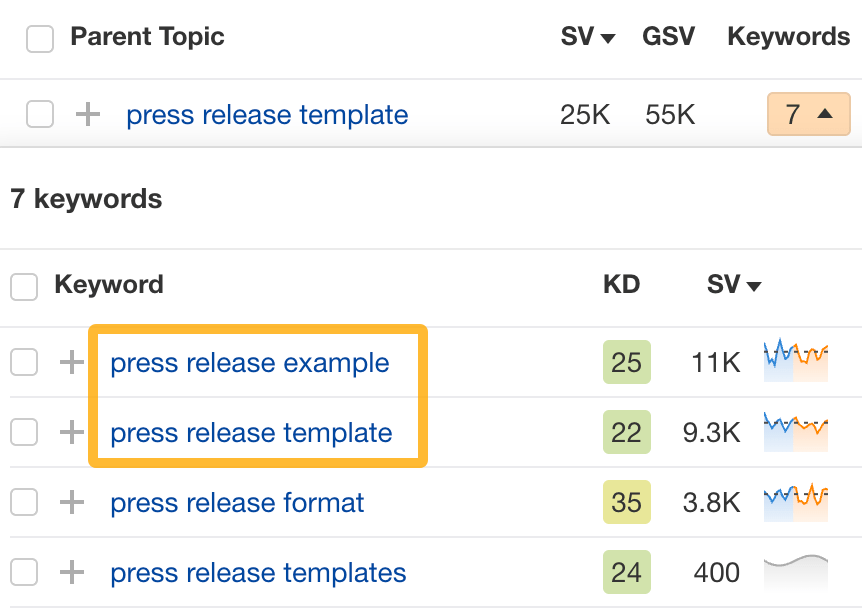

To rank for the keywords in the cluster, we can probably optimize the page we already have by adding sections about the subtopics of “press release examples” and “press release format.”
3. Target these keywords with Google Ads
Paid keywords are the simplest—look through the report and see if there are any relevant keywords you might want to target, too.
For example, Mailchimp is bidding for the keyword “how to create a newsletter.”


If you’re ConvertKit, you may also want to target this keyword since it’s relevant.
If you decide to target the same keyword via Google Ads, you can hover over the magnifying glass to see the ads your competitor is using.
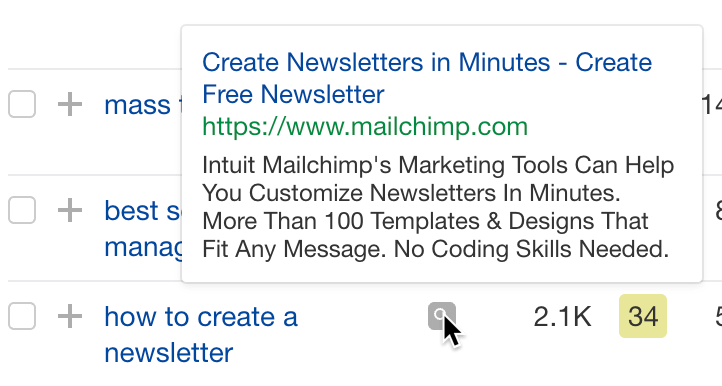

You can also see the landing page your competitor directs ad traffic to under the URL column.


Learn more
Check out more tutorials on how to do competitor keyword analysis:
SEO
Google Confirms Links Are Not That Important

Google’s Gary Illyes confirmed at a recent search marketing conference that Google needs very few links, adding to the growing body of evidence that publishers need to focus on other factors. Gary tweeted confirmation that he indeed say those words.
Background Of Links For Ranking
Links were discovered in the late 1990’s to be a good signal for search engines to use for validating how authoritative a website is and then Google discovered soon after that anchor text could be used to provide semantic signals about what a webpage was about.
One of the most important research papers was Authoritative Sources in a Hyperlinked Environment by Jon M. Kleinberg, published around 1998 (link to research paper at the end of the article). The main discovery of this research paper is that there is too many web pages and there was no objective way to filter search results for quality in order to rank web pages for a subjective idea of relevance.
The author of the research paper discovered that links could be used as an objective filter for authoritativeness.
Kleinberg wrote:
“To provide effective search methods under these conditions, one needs a way to filter, from among a huge collection of relevant pages, a small set of the most “authoritative” or ‘definitive’ ones.”
This is the most influential research paper on links because it kick-started more research on ways to use links beyond as an authority metric but as a subjective metric for relevance.
Objective is something factual. Subjective is something that’s closer to an opinion. The founders of Google discovered how to use the subjective opinions of the Internet as a relevance metric for what to rank in the search results.
What Larry Page and Sergey Brin discovered and shared in their research paper (The Anatomy of a Large-Scale Hypertextual Web Search Engine – link at end of this article) was that it was possible to harness the power of anchor text to determine the subjective opinion of relevance from actual humans. It was essentially crowdsourcing the opinions of millions of website expressed through the link structure between each webpage.
What Did Gary Illyes Say About Links In 2024?
At a recent search conference in Bulgaria, Google’s Gary Illyes made a comment about how Google doesn’t really need that many links and how Google has made links less important.
Patrick Stox tweeted about what he heard at the search conference:
” ‘We need very few links to rank pages… Over the years we’ve made links less important.’ @methode #serpconf2024″
Google’s Gary Illyes tweeted a confirmation of that statement:
“I shouldn’t have said that… I definitely shouldn’t have said that”
Why Links Matter Less
The initial state of anchor text when Google first used links for ranking purposes was absolutely non-spammy, which is why it was so useful. Hyperlinks were primarily used as a way to send traffic from one website to another website.
But by 2004 or 2005 Google was using statistical analysis to detect manipulated links, then around 2004 “powered-by” links in website footers stopped passing anchor text value, and by 2006 links close to the words “advertising” stopped passing link value, links from directories stopped passing ranking value and by 2012 Google deployed a massive link algorithm called Penguin that destroyed the rankings of likely millions of websites, many of which were using guest posting.
The link signal eventually became so bad that Google decided in 2019 to selectively use nofollow links for ranking purposes. Google’s Gary Illyes confirmed that the change to nofollow was made because of the link signal.
Google Explicitly Confirms That Links Matter Less
In 2023 Google’s Gary Illyes shared at a PubCon Austin that links were not even in the top 3 of ranking factors. Then in March 2024, coinciding with the March 2024 Core Algorithm Update, Google updated their spam policies documentation to downplay the importance of links for ranking purposes.
The documentation previously said:
“Google uses links as an important factor in determining the relevancy of web pages.”
The update to the documentation that mentioned links was updated to remove the word important.
Links are not just listed as just another factor:
“Google uses links as a factor in determining the relevancy of web pages.”
At the beginning of April Google’s John Mueller advised that there are more useful SEO activities to engage on than links.
Mueller explained:
“There are more important things for websites nowadays, and over-focusing on links will often result in you wasting your time doing things that don’t make your website better overall”
Finally, Gary Illyes explicitly said that Google needs very few links to rank webpages and confirmed it.
I shouldn’t have said that… I definitely shouldn’t have said that
— Gary 鯨理/경리 Illyes (so official, trust me) (@methode) April 19, 2024
Why Google Doesn’t Need Links
The reason why Google doesn’t need many links is likely because of the extent of AI and natural language undertanding that Google uses in their algorithms. Google must be highly confident in its algorithm to be able to explicitly say that they don’t need it.
Way back when Google implemented the nofollow into the algorithm there were many link builders who sold comment spam links who continued to lie that comment spam still worked. As someone who started link building at the very beginning of modern SEO (I was the moderator of the link building forum at the #1 SEO forum of that time), I can say with confidence that links have stopped playing much of a role in rankings beginning several years ago, which is why I stopped about five or six years ago.
Read the research papers
Authoritative Sources in a Hyperlinked Environment – Jon M. Kleinberg (PDF)
The Anatomy of a Large-Scale Hypertextual Web Search Engine
Featured Image by Shutterstock/RYO Alexandre
-

 PPC4 days ago
PPC4 days ago19 Best SEO Tools in 2024 (For Every Use Case)
-

 MARKETING7 days ago
MARKETING7 days agoWill Google Buy HubSpot? | Content Marketing Institute
-
SEARCHENGINES7 days ago
Daily Search Forum Recap: April 16, 2024
-

 SEO7 days ago
SEO7 days agoGoogle Clarifies Vacation Rental Structured Data
-

 MARKETING6 days ago
MARKETING6 days agoStreamlining Processes for Increased Efficiency and Results
-
SEARCHENGINES6 days ago
Daily Search Forum Recap: April 17, 2024
-

 SEO6 days ago
SEO6 days agoAn In-Depth Guide And Best Practices For Mobile SEO
-

 PPC6 days ago
PPC6 days ago97 Marvelous May Content Ideas for Blog Posts, Videos, & More















You must be logged in to post a comment Login